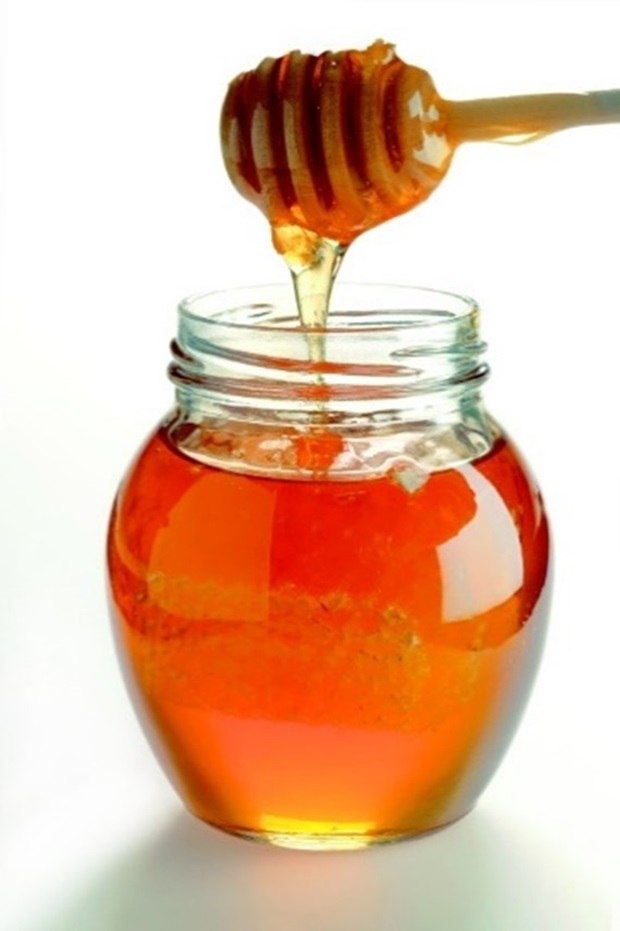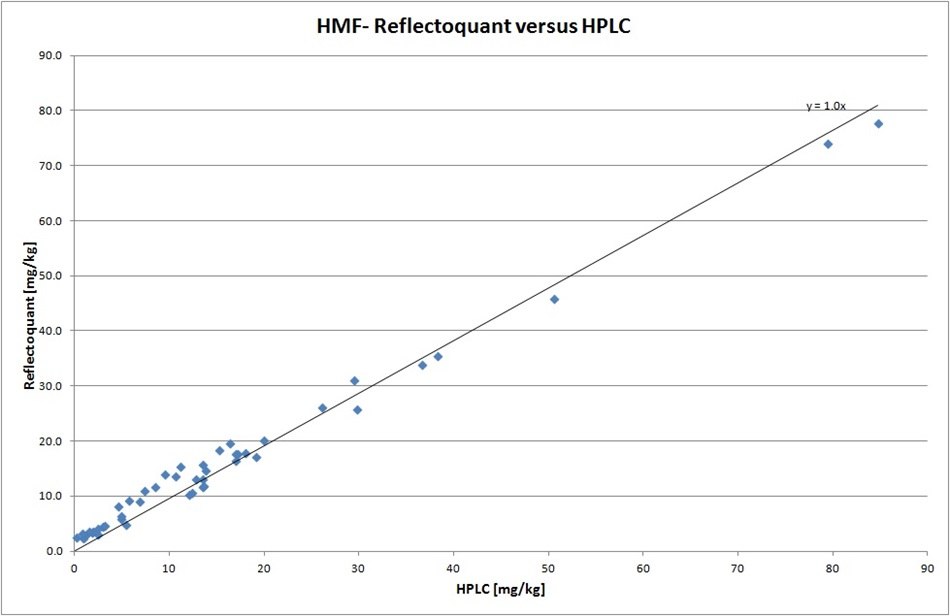Reflectometric Determination of Hydroxymethylfurfural in Honey
Abstract
This protocol involves the reflectometric determination of HMF in a honey sample following its chemical conversion into a colored complex using a barbituric acid derivative and an aminophenazone derivative. The intensity of the resulting color, measured by reflectometry, is proportional to the HMF concentration in the sample.
Section Overview

Introduction
Quality testing of natural food products is critical not only for ensuring consistent composition and nutritional value but also for satisfying legal requirements necessary for market authorization. In this context, the determination of hydroxymethylfurfural (HMF) in honey has gained particular significance. Because HMF concentrations increase as a result of heat exposure and prolonged storage, the quantification of HMF serves as an essential means of assessing honey’s freshness and overall quality. Monitoring HMF levels serves as a reliable measure of product quality and supports compliance with regulatory standards.
HMF is a six-carbon heterocyclic organic compound having both aldehyde and alcohol groups. It is formed through the acid-catalyzed dehydration of reducing sugars in honey, primarily via the Maillard reaction.¹,² While thermal processing is a major driver of HMF formation, storage conditions likewise exert a significant influence, making HMF a reliable indicator of honey quality. Accurate quantification of HMF is therefore critical, as elevated levels reflect quality deterioration, excessive thermal treatment, or possible adulteration. The compound is widely recognized as a marker of honey freshness, since it is either absent or present only in minimal amounts in freshly harvested honey, with concentrations increasing during storage or due to processing.3,4 Low HMF concentrations in honey indicate proper extraction and storage practices, affirming the product’s freshness and purity.⁵ To this end, the European Union has established maximum permissible HMF levels of 40 mg/kg for honey from temperate regions and 80 mg/kg for honey of tropical origin, as specified in the “Honigverordnung”.⁶ Additionally, the German “Imkerverbund” has set an even stricter threshold of 15 mg/kg for honey bearing its official quality seal.⁷
To determine whether the HMF content in honey complies with these specified limits, the following analytical procedure is employed.
Experimental
This application note outlines the rapid quantification of hydroxymethylfurfural (HMF) in honey using the RQflex 20® alongside the Reflectoquant® Hydroxymethylfurfural (HMF) Test (1.17952).
Method
5-(Hydroxymethyl)furfural (5-hydroxymethyl 2-furan-carbaldehyde, HMF) reacts with a barbituric acid derivative and an aminophenazone derivative to form a red-violet compound that is determined reflectometrically.
Measuring Range
- 1.0 - 60.0 mg/L Hydroxymethylfurfural
Applicable Sample
Honey
Reagents, Instruments and Materials
Test/Reagents Kit(s)
Instrument(s) & Devices
- Reflectometer RQflex® 20, Reflectoquant® (1.17246)
Other Materials
Analytical Procedure
Sample Preparation
- Weigh 2.5 g of honey into a clean test vessel.
- Add approximately 4 mL of water for analysis to the vessel and stir or swirl until the honey is completely dissolved.
- Quantitatively transfer the solution to a 10 mL volumetric flask, rinsing the vessel with small portions of water for analysis to ensure complete transfer.
- Fill the volumetric flask to the mark with water for analysis and mix thoroughly to ensure homogeneity.
- For larger sample volumes, follow the above instructions as necessary.
Measurement blank
Every type of honey gives rise to a more or less intense blank value depending on its intrinsic color. This blank value is determined by immersing a blank strip into the prepared honey sample solution and measuring it in the reflectometer. Select the HMF method beforehand by means of the bar code.
It is advisable to take the blank value into consideration even when light-colored types of honey are being investigated.
Measurement
- Press the START button on the reflectometer.
- Simultaneously, immerse both reaction zones of the test strip into the prepared sample (temperature between 15–30 °C) for 1 second.
- Withdraw the strip and allow excess liquid to run off by holding the long edge of the strip against an absorbent paper towel.
- Approximately 10 seconds before the end of the reaction time, insert the test strip completely into the strip adapter with the reaction zones facing the display.
- After the reaction time has elapsed, read the result directly from the display.
- The concentration of hydroxymethylfurfural will be shown in mg/L and automatically stored.
Notes on the measurement
For detailed operating procedures, consult the operating instructions for the RQflex® instrument and the package insert of the Reflectoquant® Hydroxymethylfurfural (HMF) Test.
Calculation
HMF Content (mg/kg) = Measured value (mg/L) − Blank (mg/L) × 4 / 1.4
Measurement results
A series of tests with 50 different types of honey were measured with the Reflectoquant® Hydroxymethylfurfural (HMF) Test. The results were compared with those obtained using the official DIN methods DIN 10751-3 (HPLC). The factor of 1.4 used in the calculation formula is used to balance the effects of the honey matrix on the test.

Figure 1.HMF Reflectoquant® test versus HPLC
Conclusion
The Reflectoquant® Hydroxymethylfurfural (HMF) Test is a suitable method to determine the HMF concentration in different honey samples. The range covered by the test is suitable for common honey samples and covers international thresholds for honey distribution. Whenever trying a new method of analysis, it is recommended to do plausibility checks and compare the results with a reference method.
References
To continue reading please sign in or create an account.
Don't Have An Account?